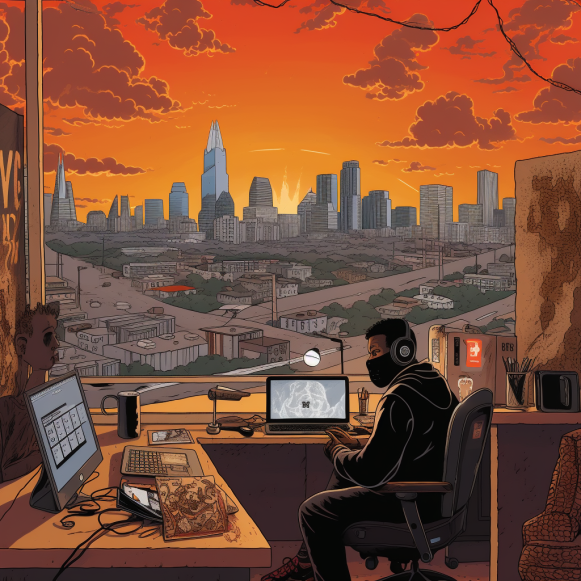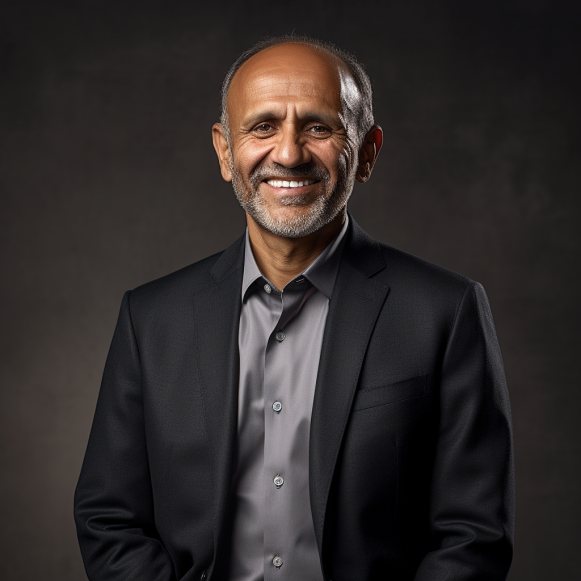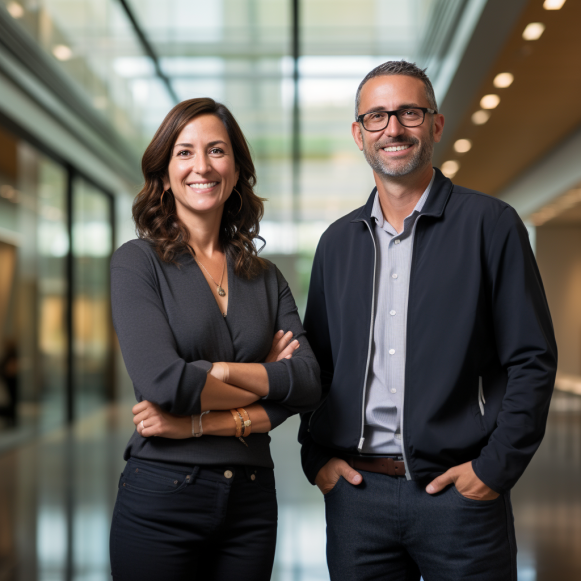‘Where ambition goes to die’: These tech workers flocked to Austin during the pandemic. Now they’re desperate to get out.

- Many tech workers in California moved to Austin during the pandemic in search of a new lifestyle.
- Austin has also been portrayed as a growing tech hub, with companies like Tesla moving to the city.
- Some tech workers say they regret moving there, given its middling tech scene and “fake” atmosphere.
Mike Chang, a 30-year-old founder and angel investor, relocated with his wife from downtown Los Angeles to Austin during the pandemic. They, like many others fleeing California, were fed up with the state’s high cost of living as well as rising crime and homelessness. They were ecstatic to be living in what they saw as a dynamic, rapidly growing tech hub where they could afford a large house in a safe neighborhood.
However, three years later, they are regretting their decision.
“Austin is the place where ambition goes to die,” Chang said. “We’d love to be in California.”
Chang, who previously lived in the Bay Area before moving to Los Angeles, is one of several tech transplants interviewed by Insider who are reconsidering their decision to live in Austin.
During the pandemic, Austin became a popular destination for remote workers and coastal tech employees looking for more space, more favorable tax laws, and a lower cost of living. Simultaneously, tech giants such as Oracle and Tesla relocated to the Austin area, while Facebook and Google expanded their real-estate presence in the city.
Danielle Fountain, an Austin real-estate agent, observed an influx of tech workers in recent years, owing primarily to remote-work opportunities — so many that Austin’s Hills suburb was dubbed “Silicon Hills,” she said. However, as quickly as they arrived, many are departing.
“I’m seeing a wave of people returning who could work from anywhere when they came out here,” Fountain explained. “But now they’re going back into the office.”
Insider spoke with six tech workers who have recently left Austin or are looking to relocate (two of these workers spoke on the condition of anonymity to avoid upsetting their employer). They cited a variety of factors, including extreme temperatures, traffic, overcrowding, and — perhaps most surprisingly — a mediocre tech scene that falls short of expectations.
From Silicon Valley to the Silicon Hills
Not long ago, Austin’s tech scene was on the rise, with national headlines claiming it could compete with Silicon Valley.
Apple broke ground on a new $1 billion, 3-million-square-foot Austin campus in 2019, while Facebook opened a gleaming 256,500-square-foot office. Tesla announced with great fanfare in 2021 that it was relocating its headquarters to Austin. Elon Musk announced his relocation to Austin, joining other tech titans such as Jim Breyer of Breyer Capital, Joe Lonsdale, cofounder of Palantir, and Bill Gurley, general partner at Benchmark.
According to the Austin Chamber, a nonprofit that advocates for the interests of Austin businesses, the city gained 94,764 new residents between 2020 and 2022, placing it first among the 50 largest metros in terms of movers as a percentage of its total population in 2020, at 4.1%.
The influx of new residents had an impact on the city’s housing market. According to Redfin, the median sale price for a home in Austin in May 2020 was $425,000. It had risen to $670,000 by May 2022, representing a nearly 58% increase.
Talent density
The reality of day-to-day living and working in Austin’s tech scene, according to those Insider spoke with, leaves a lot to be desired once you peel back the boldface names who moved to the city and the corporate announcements about flashy new headquarters.
For one thing, Musk, and even those without private jets, appear to spend very little time in the city and have demonstrated little loyalty or civic pride, according to multiple sources. This year, Musk announced Tesla’s “engineering headquarters” would be in Palo Alto, signaling a reconciliation with California officials.
And, while jobs in Austin are classified as tech because the companies are tech, the job functions tend to skew toward lower-skilled jobs, such as customer service and sales.
According to LinkedIn data, roughly a quarter of the 8,311 Apple employees in Austin are engineers. In comparison, roughly half of Apple’s 52,610 Bay Area employees are engineers.
“I would encourage people to look at companies like Apple, Oracle, and Tesla to see what types of jobs are actually being created at these companies,” Chang said, adding that he rarely encounters the caliber of engineers or investors needed to build an early-stage startup in Austin. “Talent density is still much higher in the Bay because of the network effect of all successful large companies that continue to receive funding.”
Despite his high-profile move to Austin, Gurley recently told Bloomberg’s Emily Chang that young founders should not follow in his footsteps.
“If I was a 22-year-old founder starting something, I’d go to Silicon Valley because it’s going to increase your odds of success,” Gurley said, adding that it’s easy for people to get distracted in Austin because they’re having too much fun and aren’t focusing on building their businesses. “I think there’s a question about whether you attract the most determined founders.”
After graduating from high school in 2017, John Andrew Entwistle relocated to Austin from Westchester County, New York, to launch his first company, Coder. The 25-year-old, who is now the CEO and founder of the vacation rental company Wander, continues to reside there.
Entwistle agrees that Austin’s tech scene is younger and more social than that of Silicon Valley, but he believes that the city’s tech scene will mature over time.
“You don’t have that many multi-unit, big unicorns like you do in Silicon Valley yet — it’s still an early-stage tech scene,” Entwistle told Insider. “As those companies grow and stay in the area, that dynamic obviously starts to shift a little bit.”
Austin was oversold
While Entwistle is content to be patient, others, such as Nicholas Falldine, the head of product at a software company, didn’t want to wait for Austin to bloom and left after a year.
He listed a few of his complaints about Austin, including a poor public transportation system that caused terrible traffic, subpar museums, and general overcrowding that makes it difficult to do anything spontaneous — they must be booked months in advance, he said.
He claimed there was no payoff during his year in Austin.
Falldine, 35, now lives in Fayetteville, Arkansas. He admits there isn’t much of a tech scene there, but he prefers it to what he perceives as Austin’s smoke and mirrors.
“It’s a bit of a fake scene,” he admitted. “Perhaps it’s because everyone who lives there moved there within the last few years.”
Austin, according to Nick Thomas, who works in sales, does not live up to the hype.
“People say it’s a tech scene just because that’s what they were told, but when you get down to it, there’s no evidence for it,” Insider’s Thomas explained. “I just think it was oversold.”
Thomas, 30, relocated to Austin from downtown Los Angeles in January 2021 and hopes to return soon. Austin, he claims, is a “watered-down” version of other cities he’s lived in, such as Los Angeles and San Francisco.
“It was supposed to have good food, nice weather, and live music,” he explained. “That’s what drew me in.” Then I discovered it didn’t really fit any of those criteria.”
The real-estate agent Fountain observed that Californians, in particular, were unprepared for the weather. July was Austin’s hottest month on record, with temperatures reaching 105 degrees for 11 straight days.
“When we started hitting 2022, what we started seeing was people had a whole year here in Austin and realized they don’t like the weather,” Fountain explained. “It doesn’t have what they wanted in California.”
Chang said that when he lived in Los Angeles and the Bay Area, he took going for jogs or hiking outside for granted. In Austin, he has had to spend much of the year inside to avoid extreme temperatures, and he has had to purchase a treadmill to run in the air conditioning.
“During the summers, I literally can’t leave my house,” Chang explained. “It’s freezing in the winter compared to California.”
“The heat is something else,” tweeted Sam Parr, a founder and podcast host spending his first summer in Austin. “I’m surprised at how much it irritates everyone (including myself).”
Real-estate whiplash
According to Sheharyar Bokhari, a senior economist with Redfin, Austin is experiencing whiplash after several years of strong buyer demand and price growth. When interest rates were low, starter-home prices in the Lone Star state capital rose among the fastest in the country, “but when interest rates went up really high and quickly, those prices were not completely sustainable,” according to Bokhari.
According to an Insider analysis of US Postal Service data, Austin ranks fifth in net outward migration from major US cities from January to May of this year. It’s also one of only three metros in the country that has seen a decrease in the price of starter homes — homes in the fifth to 35th percentile by sales price, according to Redfin — since this time last year.
Since 2022, the median home price in all categories has dropped as low as $525,000 in January, indicating a potential withdrawal as some remote employees have been called back to the office and others have fled in search of affordability.
Chang wants to leave Austin, but the rise in interest rates means he may have missed his chance.
“If we sell, we would lose our 3% loan and would have to buy at 7% or higher, significantly reducing our buying power,” Chang explained. “With housing prices being much higher in coastal cities, this makes buying nearly impossible.”
Chang has spent the summer scrolling through Instagram, envious of the friends he left behind in California, because he is stuck in Austin until interest rates or coastal housing prices fall.
“Social media has certainly made being trapped in Austin much worse,” he said. “It’s difficult to watch friends enjoy the beach, go on hikes, and walk their dogs while we’re stuck inside because it’s over 100 degrees.”






